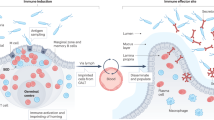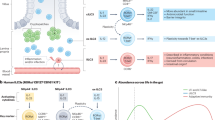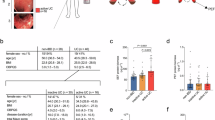Abstract
During routine diagnostic colonoscopy of children for suspected inflammatory bowel disease it is possible to see Peyer's patches in the terminal ileum. Biopsies were taken of the PP, the lymphocytes isolated by collagenase digestion, and compared with cells isolated from the colonic mucosa. A PP biopsy yielded 2-3 times as many lymphocytes as a biopsy of mucosa (0.6 × 106 from a mucosal biopsy and 1.5 × 106 from a PP biopsy). The frequency of cells bearing the markers UCHT1 (pan T cell), Leu3a (helper/inducer T cells), and UCHTA (suppressor/cytotoxic T cells) was the sane for the 2 cell populations. The major differences were that the PP cells contained B cells and the mucosal lymphocytes contained IgA plasma cells. When stimulated in vitro with PHA or PHM cells from both sites divided. This is the first report on the characteristics and function of human PP cells and will allow us now to determine if IgA specific T and B cells are found in the PP of man as has been reported for rodents.
Similar content being viewed by others
Log in or create a free account to read this content
Gain free access to this article, as well as selected content from this journal and more on nature.com
or
Author information
Authors and Affiliations
Rights and permissions
About this article
Cite this article
Macdonald, T., Spencer, J., Viney, J. et al. FUNCTIONAL STUDIES ON CELLS FROM HUMAN PEYER'S PATCHES. THEIR PHENOTYPE AND IN VITRO PROLIFERATIVE RESPONSES. Pediatr Res 20, 689 (1986). https://doi.org/10.1203/00006450-198607000-00024
Issue date:
DOI: https://doi.org/10.1203/00006450-198607000-00024



